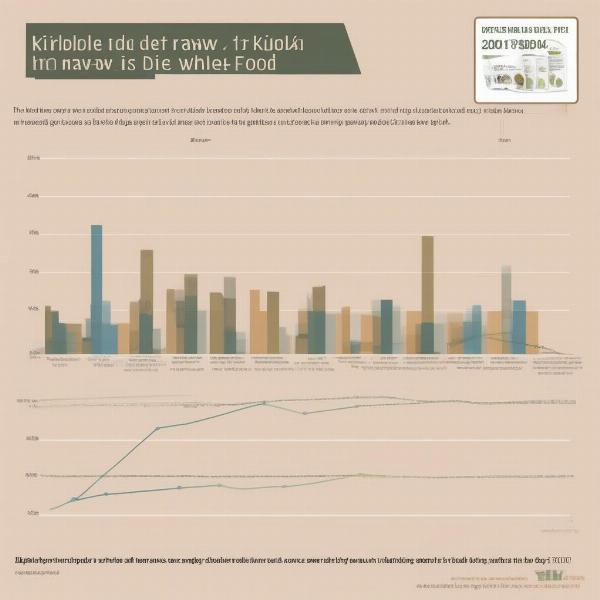A frozen raw diet for dogs, often called a “BARF” diet (Biologically Appropriate Raw Food or Bones and Raw Food), has gained popularity among some pet owners. This diet typically consists of raw meat, bones, organs, fruits, and vegetables, all frozen to preserve freshness and minimize bacterial growth. But is a frozen raw diet right for your canine companion? This comprehensive guide will explore the benefits, risks, and practical considerations of feeding your dog a frozen raw diet.
What Makes Up a Frozen Raw Diet?
Frozen raw diets aim to mimic a dog’s ancestral diet. Typical ingredients include muscle meat, organ meat (like liver and kidney), ground bone, and a small portion of fruits and vegetables. The freezing process helps to maintain the nutritional integrity of the ingredients and reduce the risk of bacterial contamination.
Benefits of a Frozen Raw Diet for Dogs
Advocates of frozen raw diets often cite several potential benefits, including improved coat health, increased energy levels, and better dental hygiene due to the chewing action required for raw bones. Some also believe it leads to smaller, firmer stools.
Potential Risks of Feeding Frozen Raw Food
While a frozen raw diet can offer some advantages, it’s crucial to be aware of the potential risks. The primary concern is bacterial contamination. Raw meat can harbor harmful bacteria like Salmonella and E. coli, which can pose a health risk to both dogs and humans handling the food. frozen raw food diet for dogs discusses these risks in more detail.
Nutritional imbalances are another potential concern. Formulating a balanced frozen raw diet requires careful planning and understanding of canine nutritional needs. It’s easy to create deficiencies or excesses of certain nutrients if the diet isn’t properly balanced.
Is a Frozen Raw Diet Right for My Dog?
Deciding whether to feed your dog a frozen raw diet is a personal choice. It’s essential to weigh the potential benefits and risks carefully. Consulting with a veterinarian or a certified canine nutritionist is highly recommended before making the switch. They can help you assess your dog’s individual needs and determine if a frozen raw diet is a suitable option. You might also consider alternatives like steve's real food for dogs or bil-jac frozen dog food.
Transitioning to a Frozen Raw Diet
If you decide to transition your dog to a frozen raw diet, do so gradually. Start by introducing small amounts of raw food alongside their current diet and slowly increase the proportion of raw food over several weeks. This allows your dog’s digestive system to adjust to the change.
 Transitioning a Dog to Raw Food
Transitioning a Dog to Raw Food
Sourcing and Handling Frozen Raw Dog Food
When choosing a frozen raw diet, prioritize high-quality ingredients from reputable sources. Ensure the food is stored and handled correctly to minimize bacterial contamination. tuckers frozen dog food and naked dog food are examples of commercially available options. Always wash your hands thoroughly after handling raw pet food.
Conclusion
A frozen raw diet can be a viable option for some dogs, offering potential benefits like improved coat and dental health. However, it’s essential to be aware of the risks, particularly bacterial contamination and nutritional imbalances. Thorough research, careful planning, and consultation with a veterinary professional are crucial for ensuring your dog’s safety and well-being on a frozen raw diet.
FAQ
- Is a frozen raw diet suitable for all dogs? Not necessarily. Puppies, senior dogs, and dogs with compromised immune systems may be more susceptible to the risks associated with a raw diet.
- How do I ensure my dog is getting a balanced frozen raw diet? Consulting a veterinary nutritionist is the best way to create a balanced raw diet tailored to your dog’s specific needs.
- What are the signs of bacterial contamination in raw dog food? Signs of spoilage include a foul odor, discoloration, or slimy texture.
- Can I prepare a frozen raw diet at home? Yes, but it requires careful planning and meticulous hygiene practices.
- What should I do if my dog gets sick after eating raw food? Consult your veterinarian immediately.
- Are there any alternatives to a completely frozen raw diet? Yes, options like gently cooked or freeze-dried raw diets might be suitable.
- How expensive is a frozen raw diet? It can be more expensive than traditional kibble or canned food.
ILM Dog is your trusted resource for comprehensive information on dog care and nutrition. We offer expert advice on a wide range of topics, including breed selection, health care, training, nutrition, grooming, and much more. Whether you’re a new dog owner or a seasoned pro, ILM Dog is here to help you provide the best possible care for your furry friend. Contact us today for personalized guidance and support. Email: [email protected], Phone: +44 20-3965-8624. Learn more at ILM Dog.